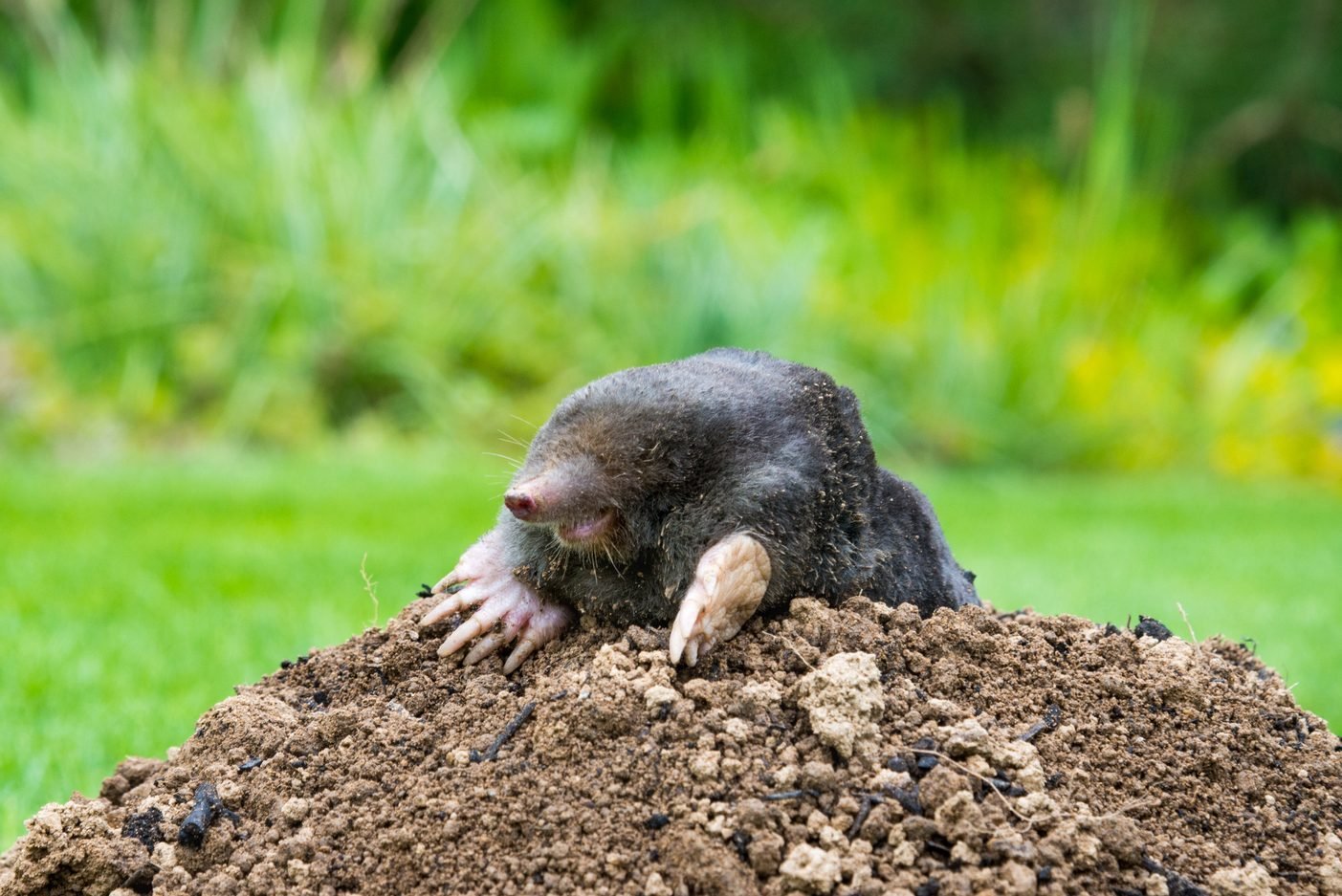Has a mole moved into your yard? You'll know it if one has. Here's how to get moles to take a hike, and not come back.

How To Get Rid of Moles in Your Yard

Moles, with their distinctive paddle-like feet, vex homeowners with their unsightly tunneling and ability to dig through your yard in no time. But these solitary creatures are often misunderstood.
I spoke with Roger Dickens, wildlife technical services manager with Ehrlich Pest Control, to get the intel on what you can do to get rid of moles on your property.
On This Page
How Do I Know I Have Moles?
Easy: When you see their tunnels running through your yard. Moles spend 99% of their time underground, so Dickens says it’s unlikely you’ll see one unless they dig a tunnel that’s too shallow.
“Another sign of mole activity is the appearance of mole hills,” Dickens says. Mole hills are mounds of loose, cloddy soil created by all that digging. These aren’t entrance or exit points; it’s just dirt pushed out of the way when moles dig through the ground.
Other animals, like pocket gophers, also dig tunnels, but their mounds include plugs where the gopher closed the opening. Mole hills don’t have these. Dickens says you can also distinguish moles from voles (aka meadow mice) because voles don’t tunnel through the soil, but rather through the grass itself.
What Damage Do Moles Cause?
Mole tunnels leave soft, raised areas in the yard a few inches taller than the surrounding surface, Dickens says. Their hills can rise up to a foot above the lawn. Dickens says the raised tunnels and mole hills can be unsightly, but any damage to your yard is inadvertent.
Moles are insectivores, looking for bugs and worms to eat. Sometimes moles get blamed for eating plants that other animals, like ground squirrels and mice, snack on. However, soil disturbance can have the accidental effect of exposing roots to air, killing your grass.
If the mole hills annoy you when you mow, or create a tripping hazard, just grab a shovel or rake and redistribute the dirt. You can also step on the tunnels to flatten them before mowing or landscaping. But the nuisances are temporary. “Mole tunnels and hills will collapse on their own over time,” Dickens says.
What Attracts Moles?
Food. Moles are always on the hunt for something to eat.
“Moles often enter someone’s yard by simply constantly foraging for grubs and earthworms,” Dickens says. “This activity is generally a continuation of tunneling from an adjacent area.”
How To Get Rid of Moles
Because moles are in your yard for food, getting rid of the food source can be effective, Dickens says.
One major food source is white grubs, the larval life stage of several types of scarab beetle. A few grubs in your lawn aren’t a big deal, but significant numbers can wreak havoc. (That’s one reason a mole in your yard can be beneficial.)
Control grubs by natural methods or chemical pesticides. A natural bacteria application called milky spore powder kills grubs, but Dickens says this approach can take years, limiting its usefulness for mole control.
Beneficial nematodes are another natural solution. These small roundworms invade the grub and kill it from within. Neither option will harm beneficial insects, earthworms or bees.
For a chemical option, Dickens recommends applying a grub pesticide, widely available at garden and home improvement centers. (Check your state’s pesticide application laws first to see if it’s legal.) Most of the time, you can just apply with a spreader and water it in. According to Michigan State University, it’s important to choose the right one and apply it correctly to avoid risk to bees.
Or, you could trap the moles. “All mole traps are lethal and the dispatching of the mole is quick and painless,” Dickens says, “therefore [it] is humane to them.”
Harpoon and choker traps are the most effective mole killers on the market, according to the University of Wisconsin (UW). These traps are widely available, but you must set them correctly in an active tunnel. Follow directions on the package precisely.
UW experts say mole poisons aren’t reliable because moles won’t eat the bait, usually peanuts (remember, they’re insectivores). Moles may abandon a tunnel if they sniff out a poison. And you risk harming other wildlife.
How To Prevent Moles From Returning
“There is no way to completely eliminate the chances of moles coming into your yard,” Dickens says. Mechanical methods like soil compaction can be problematic for underground pipes and electrical wiring, and exclusion is difficult because mole activity covers such a large area.
Moles are constantly tunneling and foraging, and can easily find their way into your yard from the neighbor next door. That means even if you trap one, another may move in, leaving you with a constant battle on your hands.
Some wildlife agencies and university extensions suggest learning to live with moles. They aerate the lawn and eat grubs. But if they’re a nuisance, Dickens says controlling the grub population is your best bet.




















